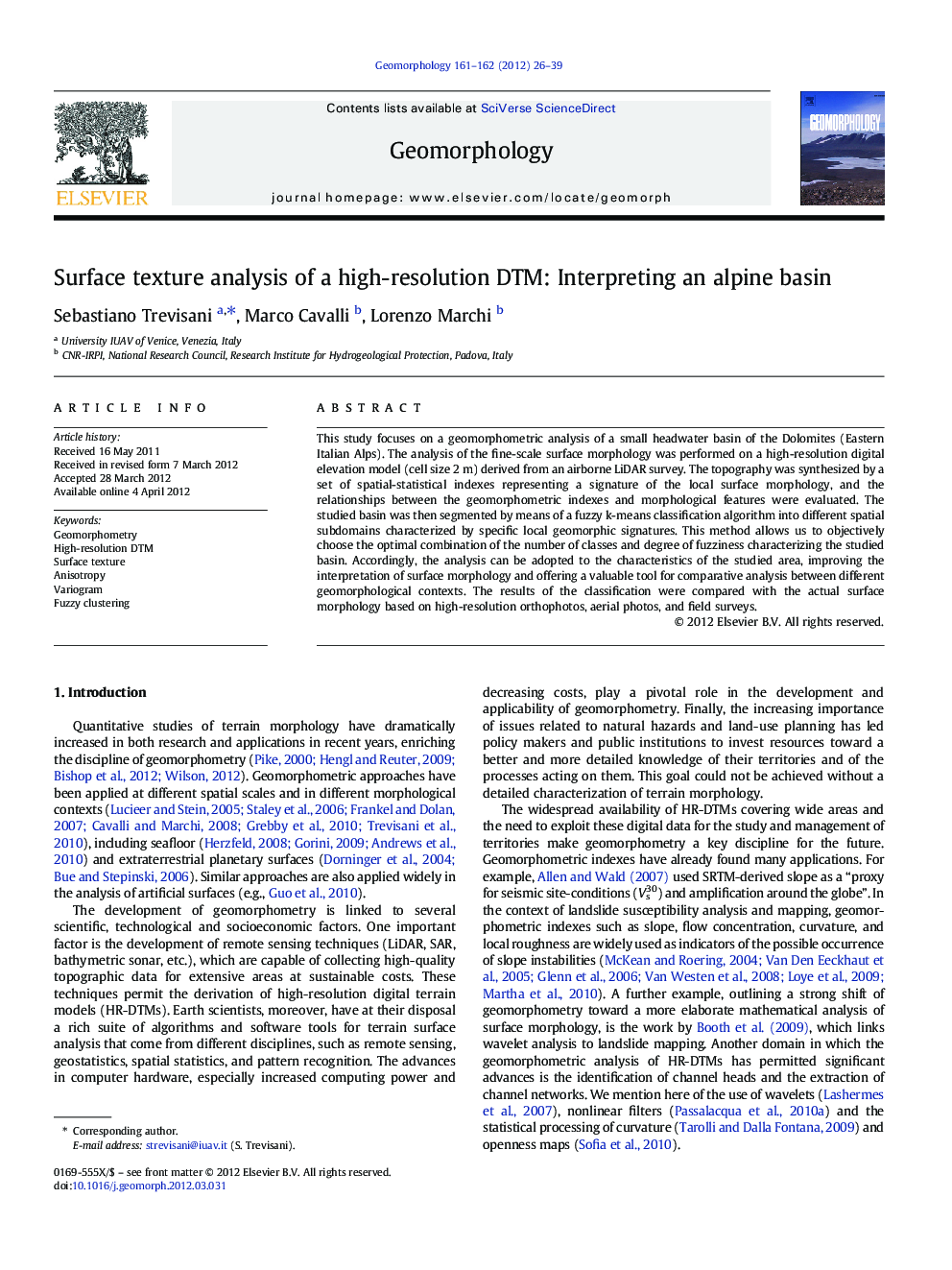| Article ID | Journal | Published Year | Pages | File Type |
|---|---|---|---|---|
| 4685174 | Geomorphology | 2012 | 14 Pages |
This study focuses on a geomorphometric analysis of a small headwater basin of the Dolomites (Eastern Italian Alps). The analysis of the fine-scale surface morphology was performed on a high-resolution digital elevation model (cell size 2 m) derived from an airborne LiDAR survey. The topography was synthesized by a set of spatial-statistical indexes representing a signature of the local surface morphology, and the relationships between the geomorphometric indexes and morphological features were evaluated. The studied basin was then segmented by means of a fuzzy k-means classification algorithm into different spatial subdomains characterized by specific local geomorphic signatures. This method allows us to objectively choose the optimal combination of the number of classes and degree of fuzziness characterizing the studied basin. Accordingly, the analysis can be adopted to the characteristics of the studied area, improving the interpretation of surface morphology and offering a valuable tool for comparative analysis between different geomorphological contexts. The results of the classification were compared with the actual surface morphology based on high-resolution orthophotos, aerial photos, and field surveys.
► Geomorphometric analysis of a high resolution DTM (HR-DTM) of an alpine basin. ► The surface texture was synthesized by a set of spatial-statistical indexes. ► Segmentation into textural classes via fuzzy k-means classification algorithm. ► Exploitation of HR-DTM: fine-scale morphology and geo-engineering significance.
